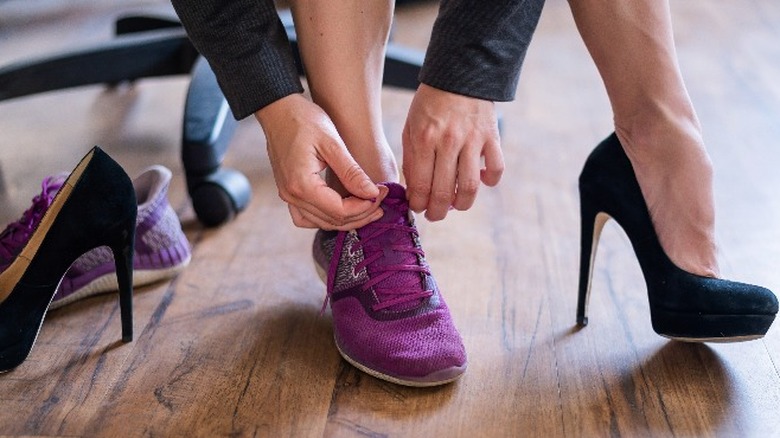What Are Hammertoes And How Do You Treat Them?
The human foot is an important part of our anatomy. Just one foot contains over 100 ligaments, muscles, and tendons, in addition to 30 joints and 26 bones (per Arthritis Foundation). Feet — and their ability to keep us stable and mobile — enable humans to perform everyday actions like walking or running (via WebMD). But feet are also prone to injury.
According to a 2019 study of over 13,000 people published in the Wiley journal of Arthritis Care and Research, reported prevalence of foot pain ranged from 13-36%. The research suggested that age and obesity are risk factors for foot pain. Women are also at higher risk. Further, the authors of the study suggest that foot pain may also put people at higher risk for a range of things like "loss of independence and reduced quality of life."
There are many potential reasons a person may experience foot pain and difficulty walking. One possible culprit is hammer toe, which affects the joint(s) in one or more of your toes.
Causes, symptoms, and treatment
A healthy toe positions itself in a forward direction. Hammertoes occur when the middle joint of the toe(s) flex, causing it to curl upward while the end of the toe points downward, per American Academy of Family Physicians (AAFP). The shape of the toe(s) may resemble a hammer, notes Cleveland Clinic.
Hammertoes can be painful and make walking difficult. Symptoms include — but are not limited to — corns or calluses on top of the toe(s), pain in the toes or feet, and inflammation (per Cleveland Clinic).
According to Medical News Today, hammertoes are often caused by shoes — like high heels — that are too tightly fit. Prior injury or even flat feet can contribute to the development of hammertoes. Genetics may play a role, while certain conditions — ranging from arthritis to diabetes — also increase a person's risk. Notably, older women are more likely to develop hammertoes.
According to WebMD, there are two types of hammertoes. If you can still move the joint(s), then it is called flexible hammertoe. If the toe(s) cannot move at all, it is called rigid hammertoe.
Symptoms of flexible hammertoes caused by footwear may be alleviated by getting shoes that fit (per Healthline). Sometimes light stretching can help. The AAFP recommends consulting your doctor about taping or splinting your toe to straighten it, and applying an ice pack to help ease any pain. Steroid injections are also an option for severe pain and swelling. Notably, rigid hammertoes usually require surgery.


